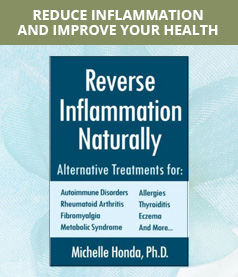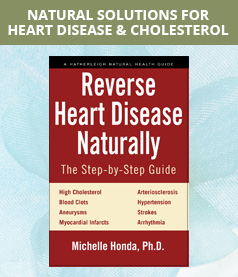
Iron has been recognized as an important element in the diet dating back further than any other mineral. Unfortunately many persons are exposed to inorganic iron; an unwanted substance by the body. The good and the bad are both expressed in this post. The function of iron in the blood is to carry oxygen to the tissues in the body. It is the center of the hemoglobin molecule where it accepts oxygen, and metabolizes it into oxygenated blood. Modern agricultural procedures have promoted iron deficiency in plants and may be the most prevalent of mineral shortages. Among the human population iron ranks the highest as a deficient state of health. Iron is the main contributor to anemia over the deficiency of B12 and folic acid. Other elements required for building blood include copper, calcium, vitamin E, and C and B vitamins, along with adequate protein.
Absorption Enhancers and Inhibitors
Like all other minerals, the amino acids in protein promote absorption and carrying iron throughout the system. Certain organic acids like citric acid and ascorbic acid (vitamin C) have shown to enhance its availability to the body.
The phytic acid in grains and other plants can have an inhibiting effect on its absorption.
Medications can Reduce Iron in the Body
Certain drugs have shown to lower or interfere with the mineral iron. Examples include: tetracycline, aspirin, ibuprofen, methyldopa, carbidopa, naproxen, oral contraceptives, sodium bicarbonate, AZT, magnesium hydroxide, penicillamine, warfarin, and thyroid hormones. To err on the side of safety, search out any complications or contraindications with all medications; especially those routinely taken.
Iron: Inorganic and Organic
Inorganic Iron
Inorganic iron is not a recommended source of iron for the human body. This form of iron is a metallic element being gray in color. Once oxygen and moisture come in contact with the element iron, rust develops. Unfortunately this form of iron is not useable by the human body. Cooking in iron pots and pans absorbs inorganic iron.
Organic Iron
Iron can only be utilized in the form that is metabolized by a plants structure, rendering it biochemically available to the body. Chlorophyll is the green juice in plants and has a similar matrix to the hem portion of the hemoglobin. Chlorophyll is an excellent source of useable iron to the human body and animals. Iron and oxygen are actually inseparable in the body in their functions. The problem is created when there are not enough reserves of iron in the body and therefore oxygen cannot be assimilated.
Excess Iron Problems
There are more symptoms associated with an excess of iron than one might imagine. Drug injections of iron can have a damaging effect on the kidneys since they have to try and excrete this metallic form of iron. I will list several examples but there are many more.
* Too much iron can lead to too much blood. This circumstance would center around an exaggerated iron intake. A series of metabolic events takes place resulting in an overabundance of blood, creating high blood pressure which can cause arteries to rupture. The blood becomes too thick adding a number of problems; one being the brain is put under tremendous pressure.
Hearing impaired
Brain fog
Dulled senses
High blood pressure
Head pressure
Difficulty concentrating
Speech impeded
Digestive troubles
Alters blood chemistry
Extreme thirst
Promotes anorexia
Dizziness
Temperature raised
Acne eruptions
Kidney malfunctioning
Venus congestion
Bleeding
Headaches
Dilated blood vessels
Equilibrium problems
Higher pulse rate
Muscle contraction, including the heart
Constipation
Iron Deficiency Conditions and Inherent Weakness
The way in which a lack of iron impacts the body’s systems and functions is extensive. The difficulty in finding all the related imbalances associated with this problem would not be time sensitive. If you are unsure of your iron or B12 and folic acid levels, have a blood test performed to gauge your nutritional requirements. If your problem is an inherent weakness, you must always monitor your iron or B12 dietary needs and not slack for prolonged periods of time. Ebbs and flows of necessary nutrients will not support a person adequately to maintain optimum daily performance. This also applies to any extra or singular element that is not being up taken sufficiently by the body or is missing. In times of fatigue or persistent stress, either from an ongoing illness or day to day circumstances; the nutritional needs of the body, especially the “glands, organs and nervous system,” will require extra quality nutrition to keep up with the demands being put upon it. Consider extra supplementation during these times.
Iron deficiency aggravates many existing problems as noted with a few examples, such as asthma, bronchia ailments, neurosis, skin problems, pain, hemorrhoids, insomnia, vertigo, bladder disorders when associated with anemia; itching and burning or tingling in parts of the body may indicate a need for more iron and even organic sodium.
Iron Deficiency Promotes
Low blood pressure
Anemia
Vulnerable to colds
Depression and apathy
Low oxygen levels
Slower speech
Poor Memory
Senility
Labored respiration
Spitting up blood
Chronic nephritis
Chronic diarrhea
Rectal and anal problems
Glandular swelling
Hair loss
Mouth blisters
Nosebleeds
Exhaustion
Nervousness
Fatigue
Fainting
Low Vitality
Prolapsed female organs
Foods High in Iron
The first seven items listed are higher iron sources than most other foods with exception to animal protein and herbs. Liquid chlorophyll is not a food but a whole food supplement; however I am listing it because it is wonderful for anemia as an iron supplement. Dried fruit is very high in iron but I do not advocate eating allot of dried fruit unless it has been reconstituted. Beware that dried fruit has a very high sugar concentrate and only unsulphured dried fruit should be eaten.
High Iron Source
Blackstrap Molasses
Black Walnuts
Cashew nuts
Liquid Chlorophyll
Dark Leafy Greens
Black Cherries
Rice Polishings
Bran
Dulse
Kelp
Dried Fruit
Fish and fish roe
Good Iron Source
Agar
Almonds
Apricots
Bananas
Beet Greens
Blackberries
Dandelion Greens
Dates
Eggs
English Walnuts
Fennel
Figs
Greens in general
Kale
Lentils, dried
Lima beans, dried
Millet
Mung beans
Mustard greens
Nettle
Parsley
Peaches, dried
Peas, dried
Pinto beans, dried
Pumpkin seeds
Radishes
Raisins
Red beans, dried
Red Peppers, hot
Rye
Sesame seeds
Sorrel
Soybeans, dried
Spinach
Sprouts
Sunflower seeds
Swiss chard
Wheat germ
White beans, navy
White Kidney, dried
Top 12 Reasons To Take Omega 3 Fatty Acids
Vitamin A Plays a Key Role in Repair and Healing Major Illnesses
Zinc Second Most Important Mineral in the Body
Best Health: Best Food Sources to Correct Malnourishment Problems (2 of 5)
Copyright © 2015 – All Rights Reserved – Michelle Honda Ph.D.
Disclaimer
While close attention was given to the accuracy of information in this article, the author accepts neither responsibility nor liability to any person with respect to injury, damage, loss or any circumstances involving alleged causes directly or indirectly related to the information in this article. The sole purpose is to educate and broaden ones awareness. This information is not meant to replace medical advice or services provided by a health care professional.













Hello
I have tested for very low ferritin levels. A woman said that I should start with low doses of iron. Too high doses can stop the absorption because it’s like a protection wall put up, by the body.
How much iron is there in liquid chlorophyll? How do I know that I do not take too much?
Thank you,
Mia
Hi Mia,
The iron in chlorophyll is great for anemia, my first iron choice for patients. It all depends on your bodies need as to how much and for how long you take a certain dosage. The levels show in subsequent blood work as to how your ferritin levels are increasing and then you would do a maintenance program of always addressing your bodies need for iron. The iron content varies from product to product and plant to plant. For instance 100 grams of alfalfa has 960 mcg of iron. Iron in this form is not a problem unless there is (for example -a liver disorder where the body has too much iron). This is not a common disorder. When purchasing a supplemental form of concentrated chlorophyll, it again depends on its concentration (drops or teaspoon dosage). Two to four teaspoons of recommended chlorophyll is good for low blood count whereas more may be required if the person has a more critical anemic problems or if B12 and folic acid are in demand. The form of iron is important as you have already noted.
All the best,
Michelle
Great information. I copied all foods high in iron on this page in notepad. THank you.
My ferritin level was 19 a month ago. I have been taking a natural swedish liquid iron supplement called Floradix. I take a cap full morning and night. I just had my ferritin levels checked again and I am now 24. I feel so much better, but am still weak. I will drink liquid chlorophyll too. I tried to do the alfalfa tablets but they made me feel bad. I looked it up online and they kinda are not great for you. Thanks again Michelle!!
Hi Anna,
Thanks for your comment. The chlorophyll will work much better than alfalfa tablets even if they didn’t cause an upset. Make sure your folic acid and B 12 are normal or adequate to hold your iron in the blood.
Best,
Michelle